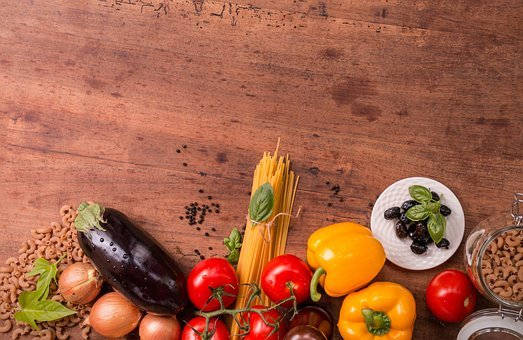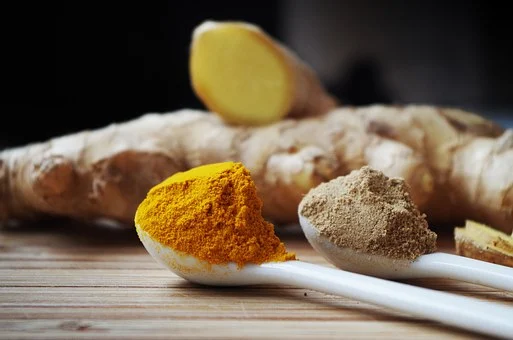What is the food additive?
Food additives are substances that people add to food to enhance taste or maintain flavor or improve appearance. Some of the first additives have been used for centuries, such as the use of vinegar, sugar and salt by our human ancestors to preserve food by pickling and the use of sulfur dioxide to preserve wine. In today’s global proliferation of edible goods, manufacturers need to constantly improve their goods to promote market consumption, and consumers need to enjoy delicious, nutritious, safe, convenient, colorful and reasonably priced food. Of course, advances in food additive technology help achieve this goal.

There are thousands of raw materials used in nature to make food additives, and the U.S. Food and Drug Administration (FDA) has published a list of more than 3,000 ingredients in its database “All Ingredients Added to Foods in the United States,” many of which we use and see in our kitchens every day (sugar, baking soda yeast, vanilla extract, salt, vinegar, and various other flavorings and food colorings).
Food additives types and functions
There are many types of food additives, the main purpose is to prolong the shelf life, adjust the visual and taste sensations, improve the quality of food, improve the nutritional value and facilitate the manufacture, etc. They can be divided into 17 types according to their functions:
- Flavoring agents: for example acidity regulators such as citric acid, malic acid, lactic acid, acetic acid, etc.; bittering agents commonly used in cola and guarana drinks such as caffeine, naringin, etc.; amino acid series of fresh taste agents such as MSG, neutral protease, etc.
- Sweeteners: for example artificial sweeteners such as aspartame, saccharin, sucralose, acesulfame, etc.; natural sweeteners such as thaumatin, sucralose, stevia, licorice sweetener, etc.
- Preservatives: often added in ready-to-eat foods, such as bento, bread, noodles, noodles and so on. Common products include: sodium nitrite, nitrous acid, potassium has dienoate, sodium propionate, etc.
- Antioxidants
- Bleaching agents
- Color preservative: limited to processed fish or meat, for example, sodium nitrite, potassium nitrite, sodium nitrate, potassium nitrate, etc.
- Bulking agents: for example baking soda, and yeast.
- Nutritional additive: vitamin class.
- Coloring agents: food coloring, Phycocyanin.
- Flavoring
- Thickening agents: egg white, gelatin, Gadarene gum, sodium alginate, deodorant gum, etc.
- Food industry chemicals: hydrochloric acid, proteolytic agents, etc.
- Solvents: glycerin, etc.
- Other categories: e.g. chemical starch, moisture control agent, defoamer, etc.

What are food additives necessary?
“In terms of function, the market is estimated to be led by the flavor enhancer segment, followed by sweeteners. Demand for food additives in beverages accounted for the largest share in 2014, while Markets and Markets reported the sauces, dressings, spices and condiments sector is projected to be the fastest-growing from 2015 to 2020.”
Food additive benefits
The food additives market is divided into specific application categories: bakery and confectionery; beverages; convenience foods; dairy and frozen desserts; sauces, dressings, spices and condiments; and others, including meat products, extruded products, oils and fats, etc.
“In the broadest sense, a food additive is any substance added to food. That said, food additives play a critical role in successful product formulation because they are used to impart specific properties such as enhancing food palatability, replacing fat content, extending product shelf life and ensuring food safety via the prevention of contamination. Examples of commonly used food additives—natural and synthetic—include acidulants, anti-caking agents, colors, emulsifiers, enzymes, flavors, hydrocolloids and sweeteners.”
This paragraph is reproduced from: aplustopper.com
What are dietary supplements?
Food supplements, as the name implies, are also dietary supplements, and adults should take one or more dietary supplements on a regular or occasional basis. There is a wide variety of dietary supplements available today, including vitamins, minerals, herbs, amino acids, enzymes, and many other products, and in a variety of forms, including traditional tablets, capsules and liquids, powders, and various energy bars. Current global favorites include the vitamin family, calcium and amino acids, glucose, probiotic fish oils, and various other products.
Food Additives and Preservatives
We live on a planet where microorganisms are everywhere, and there are many disease-causing bacteria, the growth of which can cause food spoilage and accelerate the process of food decay, producing toxins that are harmful to humans. Before the emergence of food preservatives, the food industry is slow to develop, the main factor is the problem of food spoilage, in order to solve the problem of food spoilage, food preservatives are applied to the birth of its biggest role is to inhibit the growth of microorganisms, by inhibiting the reproduction of microorganisms in food to prevent food spoilage.

We usually use daily chemical products that also contain preservatives, and cosmetics and industrial chemicals contain preservatives, but food preservatives for safety requirements are very high, and other preservatives are more different.
What are the commonly used food preservatives?
- Propionic acid and its salt: Propionic acid and its salt is a new type of food preservative developed in recent years, commonly used in bread, pastry and other food and beverage mold preservation, non-toxic side effects on the human body, and can be discharged by human metabolism, high safety.
- Sorbic acid and its salt: sorbic acid/potassium sorbate, is the most mainstream food preservative at present. Sorbic acid has an inhibitory effect on mold, yeast and aerobic bacteria, and can participate in the normal metabolism of the organism, which is one of the best internationally recognized preservatives so far.
- Nipagin ester: Nipagin ester is also known as paraben ester, and the ingredient can be seen in fruit juices, jams and beverages.
- Dehydroacetic acid and its salts: Dehydroacetic acid/sodium dehydrogenate is a broad-spectrum preservative that effectively inhibits the reproduction of mold and yeast, thus serving to extend shelf life, and is often added to products such as creams, soups, pastries, bread, soy sauce, pickles, juices, curd, rice and noodle products, fish and meat products, and grains. It should be noted that dehydroacetic acid and its sodium salt have the effect of inhibiting a variety of oxidative enzymes in the body, and are now in a position to be gradually replaced.
- Benzoic acid and its salts: Benzoic acid/sodium benzoate, under acidic conditions, has a significant inhibitory effect on yeast, mold, bacteria, etc. In practice, its sodium salt, sodium benzoate, is often seen in carbonated beverages, low-salt sauces, preserves, soy sauce, vinegar and other foods. It is currently in the position of being gradually replaced.
- Cinnamaldehyde: Cinnamaldehyde as a preservative slightly after the introduction of sorbic acid, is a new product inspired by the performance of sorbic acid and further research. Cinnamaldehyde inhibits the growth of mold and has a strong antibacterial effect. Cinnamaldehyde can participate in the normal metabolism in the body, and eventually be oxidized to CO2 and water, which is completely harmless to the human body and can enhance the taste of food. The characteristic of cinnamaldehyde is that it is insoluble in water.
Preservatives that are harmful to the human body
Not all preservatives are good. There are some preservatives that are banned in various countries, and they are harmful to the human body and can easily lead to some health problems, especially when ingested in large doses over a long period of time. In fact, many previously used preservatives are now banned.
- Benzoates: can induce allergies and even cause brain damage. Pickles, flours, margarine, purees, juices and beer can contain this chemical additive in their physical form.
- Bromate: can destroy food nutrients and cause diarrhea. This preservative is most often used in white flour and bread.
- Butylated hydroxyanisole and dibutyl hydroxyl: Butylated hydroxyanisole and dibutyl hydroxyl are the two most frequently used man-made synthetic antioxidants. Studies have found that they can cause cancer in rats. Butylated hydroxyanisole can be found in meats, baked goods, cereals, snacks and beer. Dibutyl hydroxyl, on the other hand, is often used in prepackaged foods.
- Glutamates: Can cause side effects such as headaches, palpitations, dizziness and cancer. Almost all convenience foods contain this harmful preservative.
- Mono- and diglycerides: can cause birth defects and cancer in babies. Many foods contain this preservative, such as cookies, cakes, peanut butter, bread, dried fruit stir-fry, shortening and margarine.
- Nitrates and nitrites: Nitrates and nitrites are known carcinogens. This preservative is often used in processed meat products.
- Sulfites: Sulfites are also a common food preservative and can cause adverse reactions such as headaches, joint pain, heart palpitations, allergies and cancer. It is often used in dried fruits, canned olives and peppers, corn syrup, corn starch, wine and vinegar.
If you are interested in a comprehensive understanding of some related products about food additives, please leave your email and let’s have a deep communication.
At present, the world food industry in commonly used preservatives to chemical synthesis for the majority, but the global epidemic is rampant, people are increasingly health-conscious, more and more pursuing broad-spectrum, efficient, less toxic natural food preservatives. According to the future market insights website, the global market for natural food preservatives is expected to reach more than $400 million this year and grow at a compound annual growth rate of 7%, reaching more than $800 million in 2032.
People prefer organic food
With the rise in health consciousness, the demand for organic and chemical-free foods has increased dramatically. Societal concerns about environmental sustainability are also driving manufacturers to use more natural preservatives. As a result, natural food preservatives are gaining faster growth.
Increased penetration of the internet and e-commerce has also increased the global demand for organic foods. The use of synthetic foods in conventional diets is gradually being abandoned due to health hazards and more people are looking toward organic products.
Demand for natural food preservatives is highest in the U.S.
North America is one of the most important regions for the natural food preservatives industry, accounting for more than one-third of the total market share in 2021. And the U.S. dominates the regional market with an estimated growth rate of 6%. With the increasing number of diseases caused by synthetic substances in food, natural ingredients are becoming more popular. Moreover, the investments and efforts of reputed companies in the U.S. have led to significant advancements in natural preservative technology.
The natural food preservatives market in China is also booming. The natural food preservatives market in China is forecasted to grow at a CAGR of 6.3% during the period 2022-2032. Rapid urbanization, coupled with the rising disposable income of consumers, has led to increased demand for packaged foods such as frozen foods and confectionery in China. With the growth of the organic food market, the demand for food preservatives is also on the rise.
Antimicrobial agents are gaining popularity in the natural food preservative industry
According to the U.S. Food and Drug Administration (FDA), more than 3,000 chemical products are approved for use in food products to confer or preserve specific functional and organoleptic characteristics, as well as to extend shelf life. And there are three types of natural preservatives: antimicrobials, antioxidants, and anti-enzyme preservatives. Among them, antimicrobial agents account for about 60% of the global natural food preservatives market.
Compared with chemical preservatives, natural food preservatives are non-toxic, safe and efficient. However, the current high price of natural food preservatives makes it difficult for most food manufacturers to afford them. Significantly reducing the cost of natural food preservatives is a prerequisite for the widespread application of natural food preservatives.
